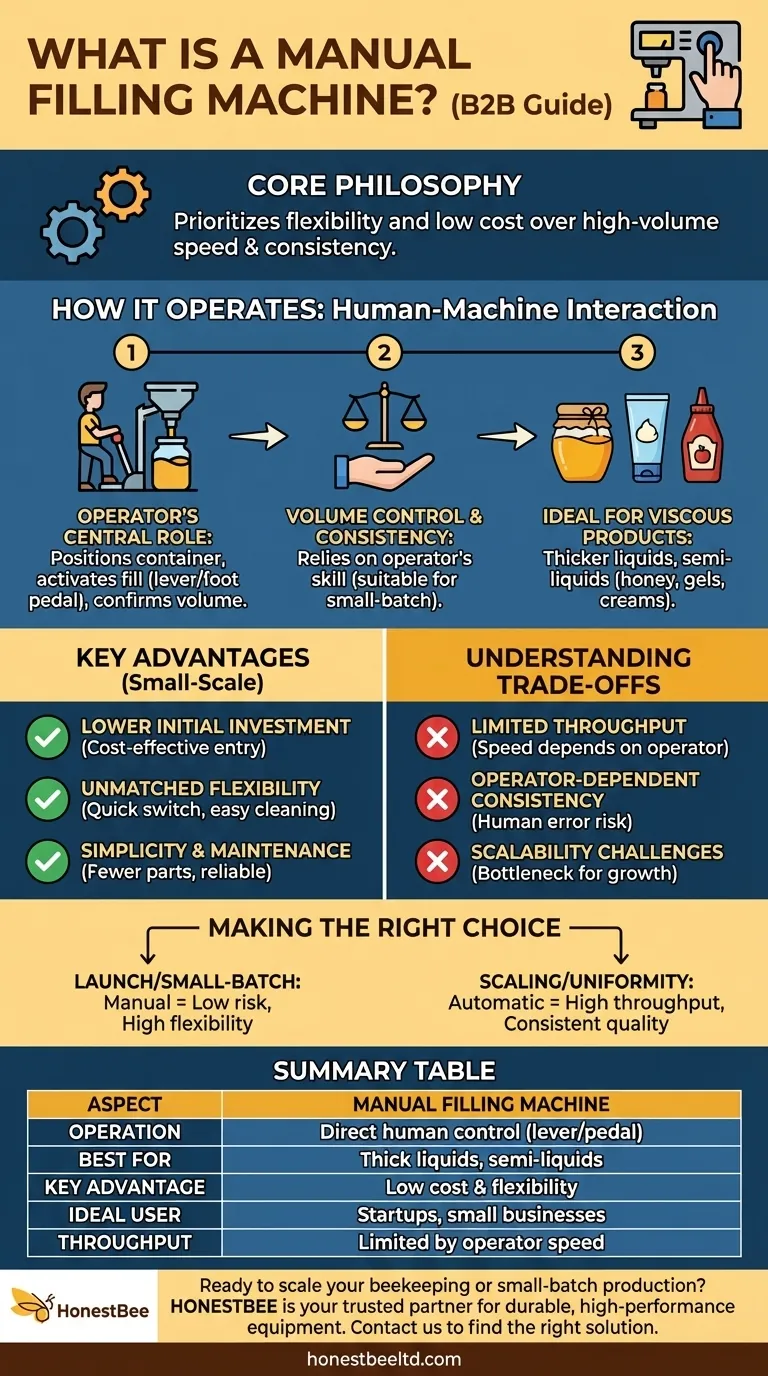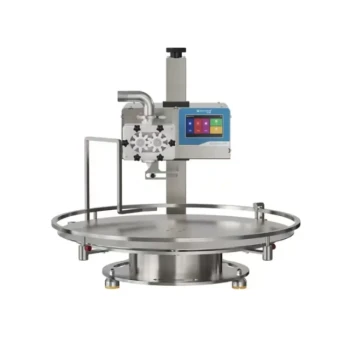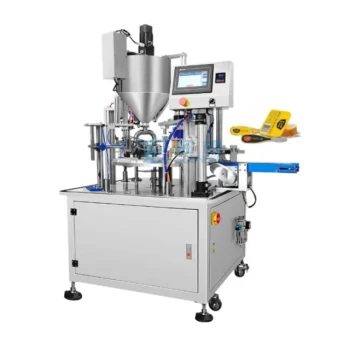At its core, a manual filling machine is a device that requires direct human involvement to dispense a product into containers. An operator physically places each bottle or jar, initiates the fill, and controls the amount of product dispensed, making it a completely hands-on process.
The critical distinction is not just about human involvement, but about operational philosophy. Manual filling machines prioritize flexibility and low cost over the speed and high-volume consistency offered by automated systems.

How a Manual Filling Machine Operates
A manual filler is fundamentally a simple tool designed to provide control and assistance to an operator, rather than replacing them. Its design is centered around this human-machine interaction.
The Central Role of the Operator
The entire process hinges on the operator. They are responsible for positioning the container, activating the fill (often via a lever or foot pedal), and visually confirming the correct volume before moving to the next container.
Volume Control and Consistency
While some manual fillers have mechanisms to help measure a dose, final consistency often relies on the operator's skill. This level of precision is perfectly acceptable for many small-batch products.
Ideal for Viscous Products
These machines excel with thicker liquids and semi-liquids where flow can be managed easily by the operator. Products like honey, gels, creams, and sauces are common applications.
Key Advantages for Small-Scale Operations
The appeal of a manual machine is not its speed, but its practicality for businesses that are starting out or have specialized needs.
Lower Initial Investment
Manual fillers are significantly more cost-effective than their automatic counterparts. This low barrier to entry makes them an ideal starting point for startups, small businesses, and even hobbyists.
Unmatched Flexibility
Operators can switch between different container sizes and shapes with minimal setup time. Cleaning the machine between different product batches is also a much simpler and faster process.
Simplicity and Maintenance
With fewer moving parts and no complex electronics or programming, manual machines are generally easier to maintain and troubleshoot. This reliability is a major benefit for operations without a dedicated maintenance team.
Understanding the Trade-offs
Choosing a manual filler means accepting certain limitations in exchange for its benefits. Objectively weighing these trade-offs is crucial.
Limited Throughput and Speed
The production rate is entirely dependent on the speed and stamina of the human operator. This makes it unsuitable for high-volume production demands where speed is a critical factor.
Operator-Dependent Consistency
While an experienced operator can be very consistent, the potential for human error in fill levels is always present. Automated systems provide a level of precision and repeatability that a manual process cannot match.
Scalability Challenges
A manual filling machine can quickly become a production bottleneck as a business grows. When demand outpaces the operator's capacity, the only solution is to invest in a semi-automatic or fully automatic system.
Making the Right Choice for Your Goal
The decision between manual and automatic filling is a strategic one, tied directly to your production volume and business objectives.
- If your primary focus is launching a new product or managing a small-batch operation: A manual filling machine provides the lowest financial risk and the greatest operational flexibility.
- If your primary focus is scaling production and guaranteeing product uniformity: An automatic filling machine is the necessary investment to achieve high throughput and consistent quality.
Choosing the right equipment is about aligning your tools with your current scale and future ambition.
Summary Table:
| Aspect | Manual Filling Machine |
|---|---|
| Operation | Direct human control (lever/foot pedal) |
| Best For | Thick liquids, semi-liquids (honey, gels, creams) |
| Key Advantage | Low initial cost & high flexibility |
| Ideal User | Startups, small businesses, hobbyists |
| Throughput | Limited by operator speed |
Ready to scale your beekeeping or small-batch production?
A manual filling machine is the perfect, cost-effective starting point for managing your honey, creams, or other viscous products. As your business grows, HONESTBEE is your trusted partner for the next step. We supply durable, high-performance beekeeping supplies and equipment to commercial apiaries and distributors through our wholesale-focused operations.
Let's discuss your production goals. Contact our experts today to find the right equipment for your operation's scale and ambition.
Visual Guide

Related Products
- Economy Small Honey Filling Machine Honey Bottle Filler Packaging Machine
- Small Honey Filling Machine Sachet Packing Equipment Single Nozzle
- Commercial Rotary Honey Filling Machine for Production
- Precision Automated Packaging Turntable Honey Spoon Filling Sealing Packing Machine
- Automated Rotary Bottle Unscrambler for Honey Production Line
People Also Ask
- What types of machines are used for honey packaging? Build an Efficient Line for Your Scale
- What equipment is used for packaging honey? A Guide to Filling, Capping & Labeling Systems
- Why is customer support important when purchasing a honey filling machine? Ensure Maximum Uptime for Your Bottling Line
- What technologies are incorporated into honey filling machines? Piston, Pump, or Gravity for Your Production
- What is the best use case for pump filling machines? Efficiently Bottle Medium-Viscosity Liquids











